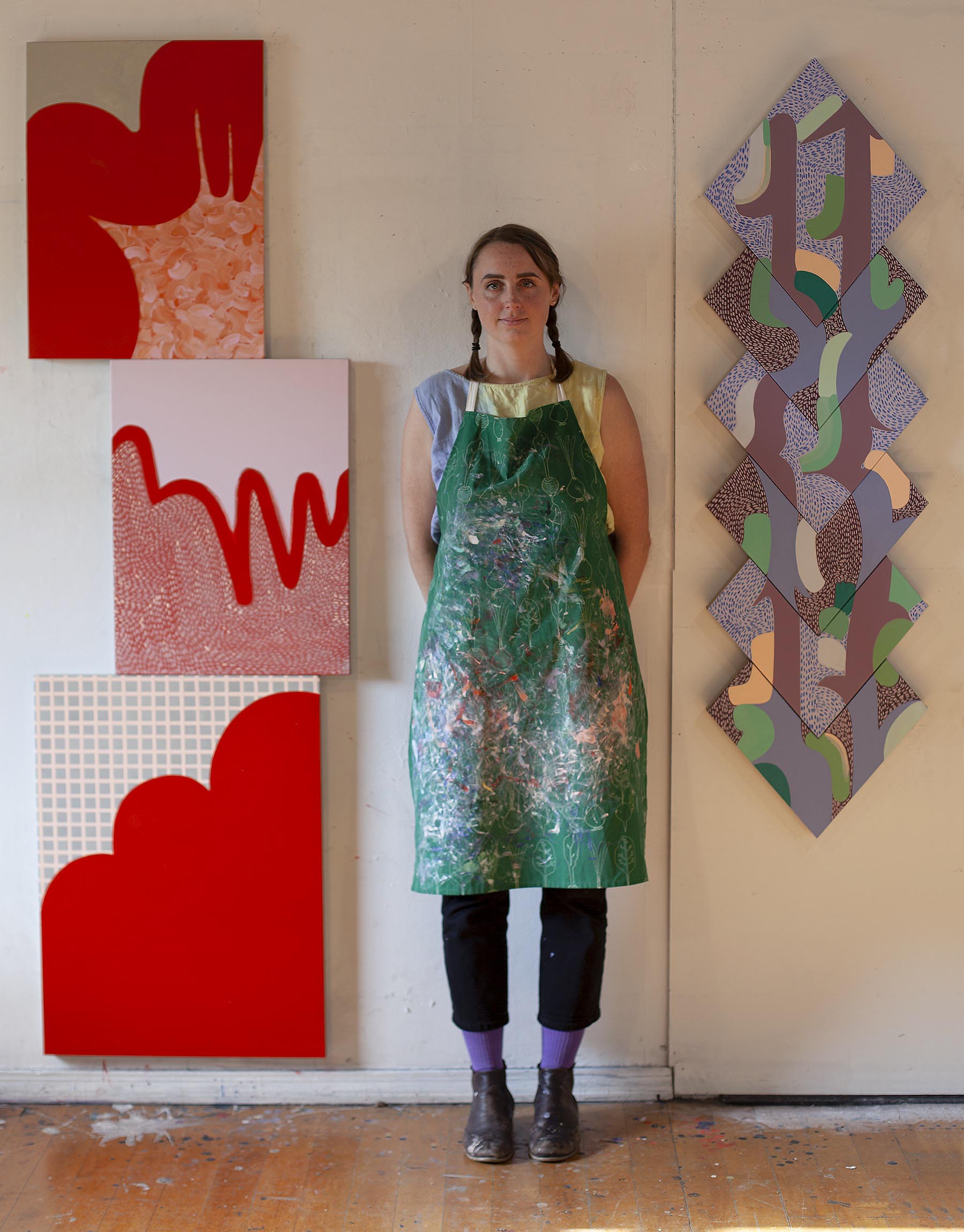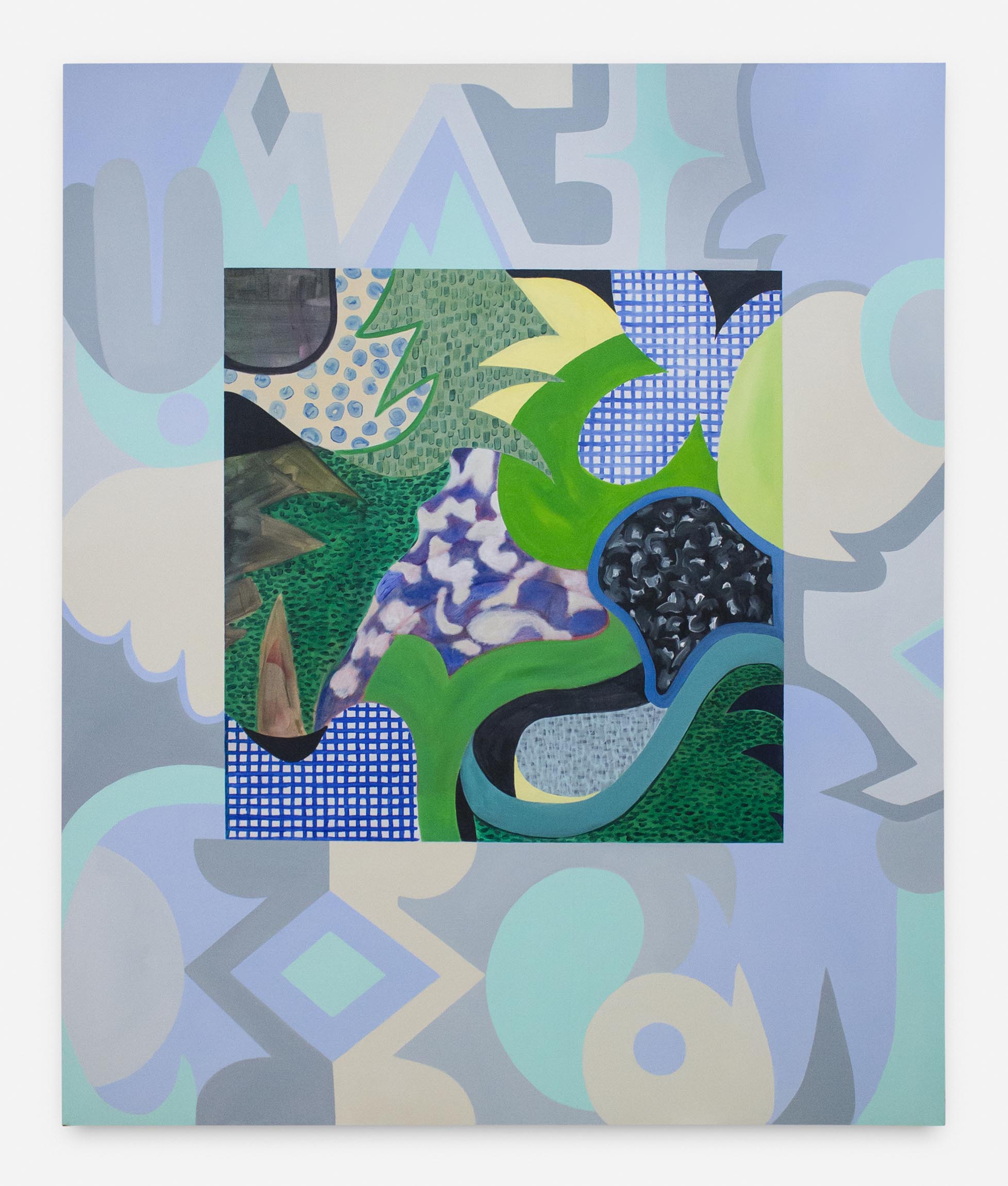How did you get into making art?
I grew up on a small Island in the Pacific Northwest and art was a big part of my childhood. My parents decided to homeschool my siblings and I, so I spent a lot of time playing outdoors on our farm. From an early age I was playing with space, constructing elaborate forts and abstract structures. I think most kids do this, but I guess I just didn’t outgrow it. My older sister was really good with drawing and painting, so I also followed her around and tried to keep up with her. When I entered public school in high school, I found art was really my favorite thing to do. I also had a great teacher who directed me towards painting in particular. When I got to undergrad I started in the art department and never looked back.
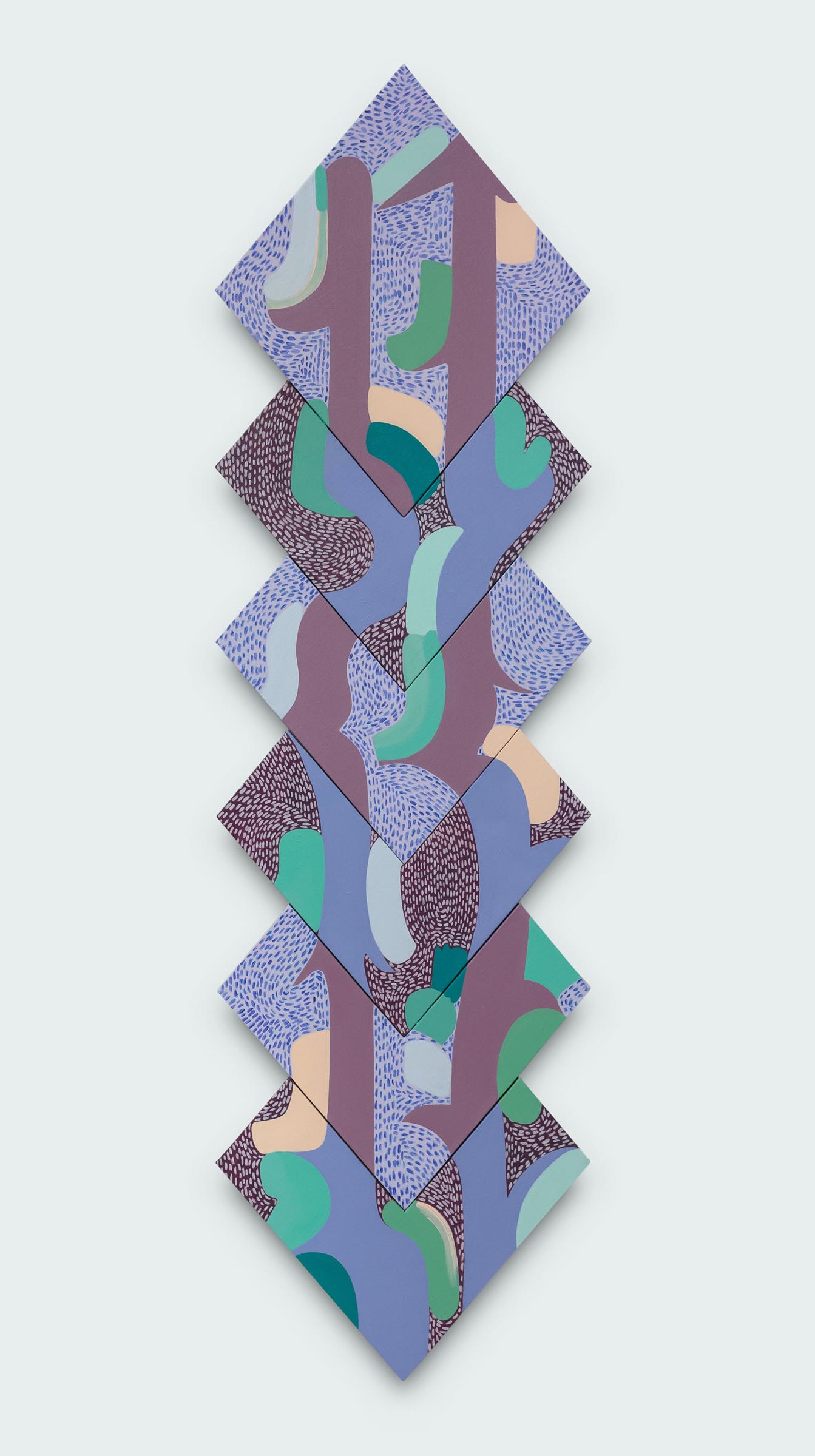
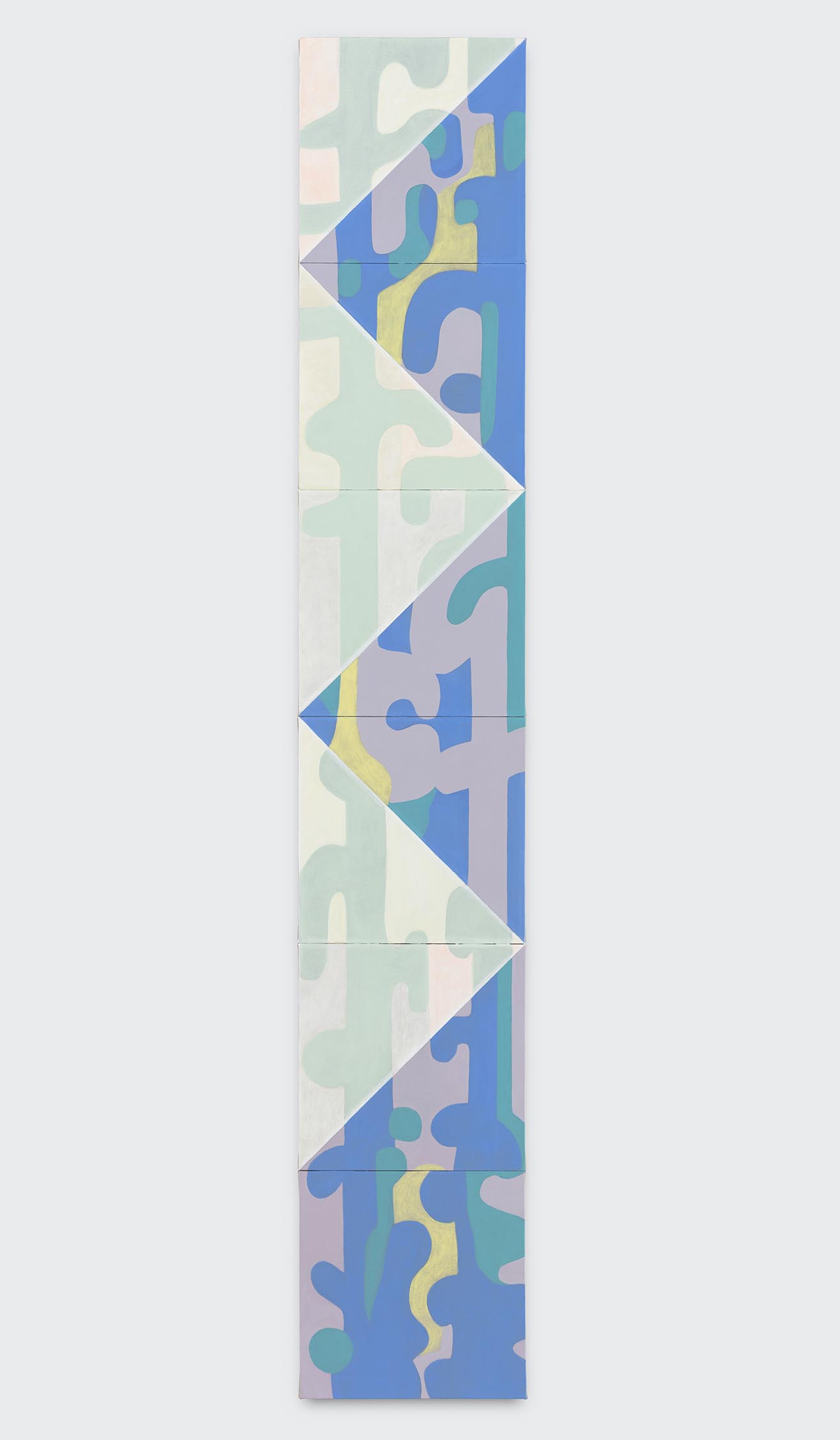
What are you currently working on?
I’m currently working on a new series of shaped paintings. At the beginning of this year I started making interlocking linen structures. These new paintings are singular works that are made by locking together different linen canvases. I build all my stretchers from scratch, so I’ve been able to play with the shapes and angles of them. The more recent interlocking canvases have up to eight different pieces locked together. They’re really fun to make. It’s challenging and exciting to decide what to paint on them. Each piece becomes like a complex puzzle that I’m solving. The paintings are abstract, but they definitely have references to landscapes. My childhood memories of playing outdoors seem to find their way into my paintings. Similar to how I once constructed forts and transformed trees and rocks into my own secret worlds, I’m now using acrylic paint, linen and wood to create visual investigations that converse with contemporary painting.
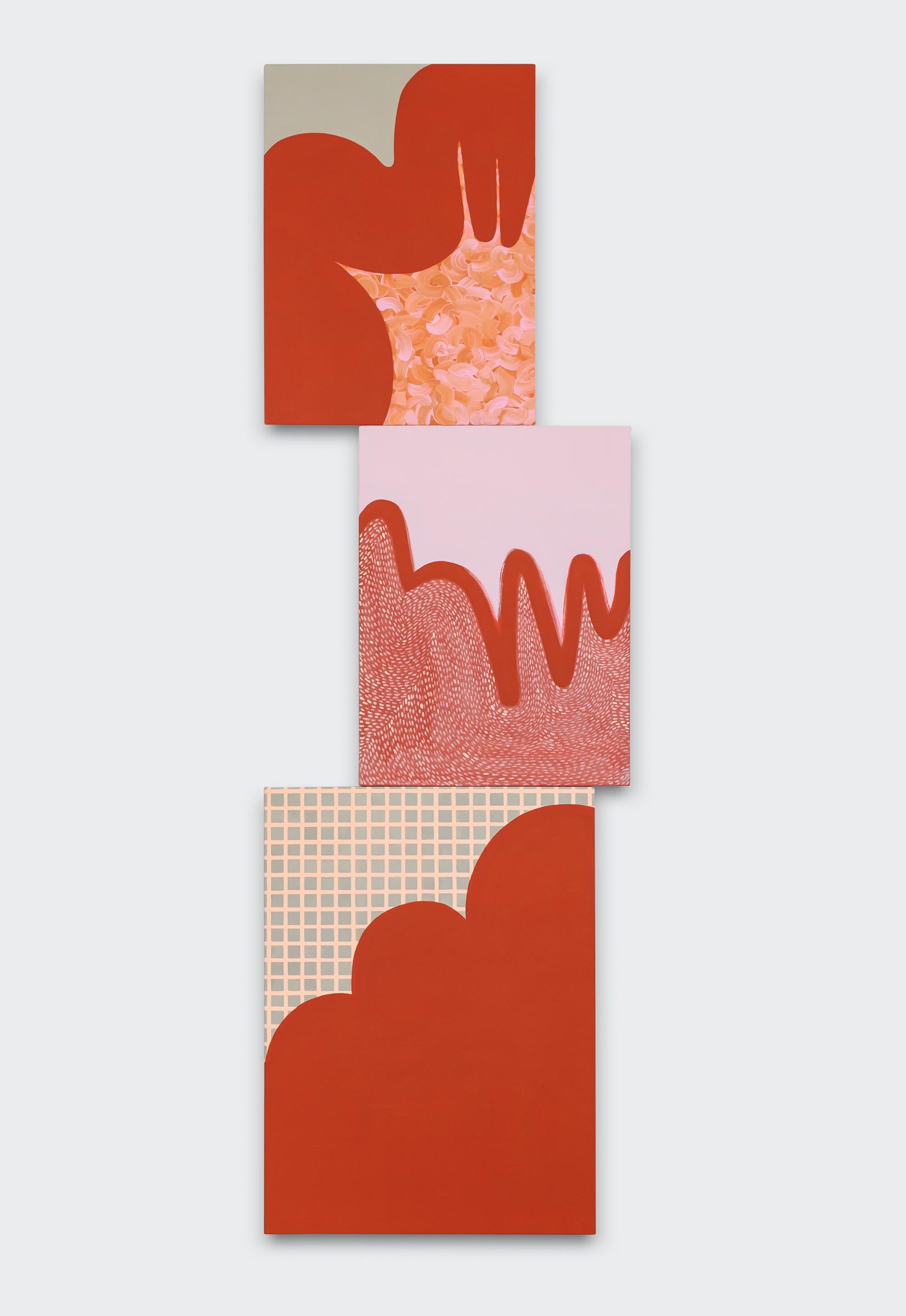
I started to think about the way the size and shape of a painting are powerful communicators.
Debbi Kenote

What inspired you to get started on this body of work?
This body of work began late last year when I was sketching and painting shapes floating on a surface that were distinct from their backgrounds. I made some shaped panels a couple years ago and I was reflecting on that body of work. The main difference was that I wanted to use linen and to make actual stretchers. I made a diptych first and found that it was easier to lock the canvases together before they went on the wall. Then it grew from there. I started to think about the way the size and shape of a painting are powerful communicators. In grad school we talked a lot about painting being a “window,” and I think I’ve been thinking about this since, in particular how to change or distort this idea. I use color intensely in my work, it acts as its own language. I’m now trying to do the same with shapes. I studied painting and installation for my BFA, and I got my MFA in sculpture. One of the most exciting parts of this new work is that I get to combine all of these mediums.
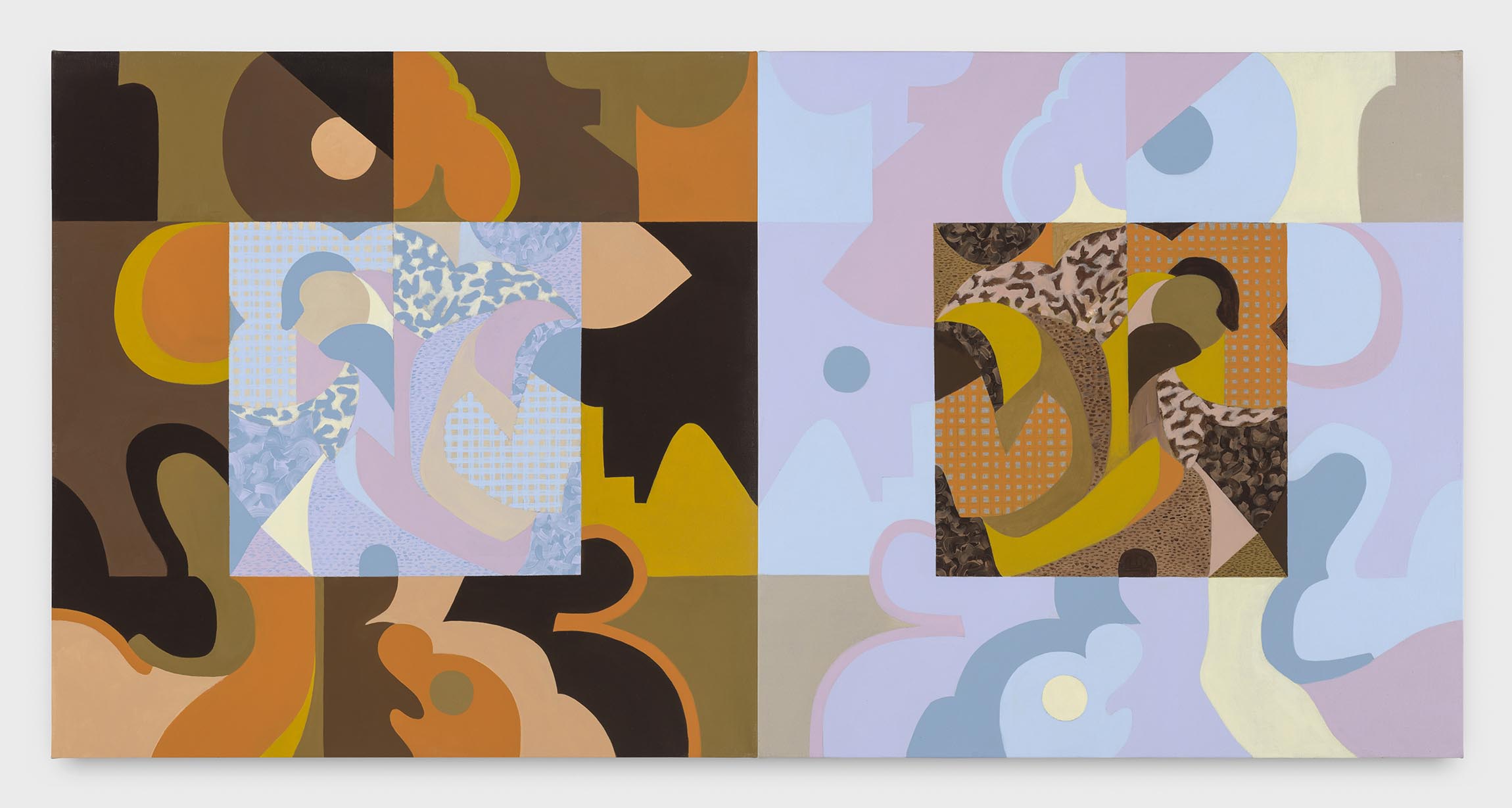
Do you work on distinct projects or do you take a broader approach to your practice?
My work seems to progress very linearly. There’s always a direct connection with the previous work, but if you go back a few paintings it can feel like a bigger jump. I tend to have just a couple in progress at a time. I get consumed with “unlocking” the work. Because I create abstractly, it becomes an exciting back and forth with the piece. I do some sketching, but 50% or more of the work is decided on the surface and I find that it’s easiest for me to focus on one or two pieces at a time. I do circle back on concepts though. I like to think I’m stealing ideas from myself that I’ve forgotten about. I often look back at work from a few years before as a jumping off point. I think I can see and understand it better after some time has gone by.
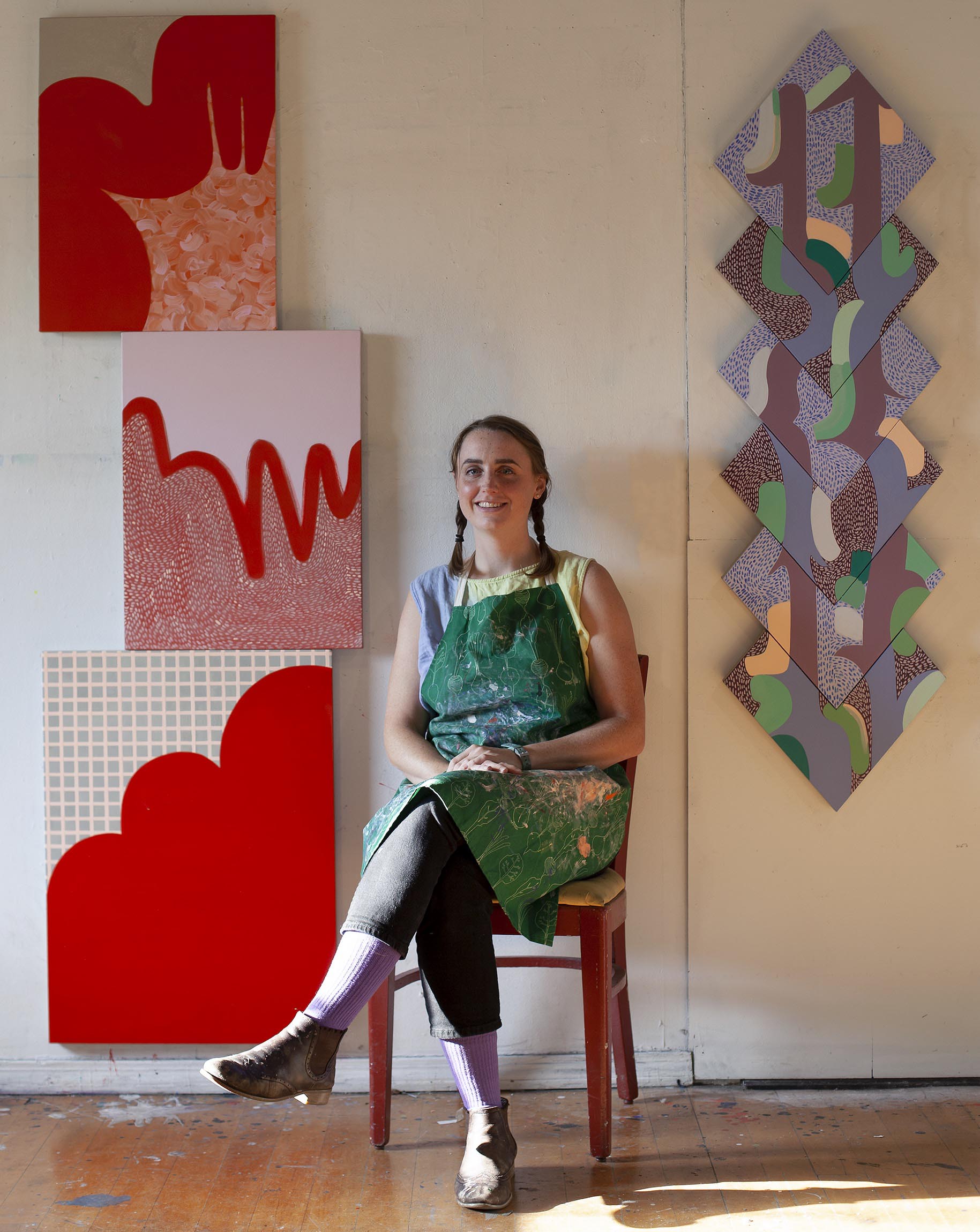
What’s a typical day like in your studio?
I wish I had typical days, haha. I work as a freelance art handler and sometimes I’m able to take off a whole month to paint, other times I’m there just on the weekends. I really love working with natural light, so I’m usually in the studio during those hours. The fabrication of the stretchers are custom and require a lot of stretching, so some days are spent fully on fabrication. For the most recent group of paintings, I took a couple months just to build all the structures. It was a very meditative chapter in the studio. I listened to a lot of podcasts and felt like a sculptor pondering subtle changes in form and angle. The last couple months I’ve just been painting. These days look like coffee cups and sketches scattered, with paintings on the floor and on the wall. I’m in my head more, teasing out compositional solutions. There’s a lot of color mixing and experimentation. I spend a good amount of time sitting and looking at the work as well.
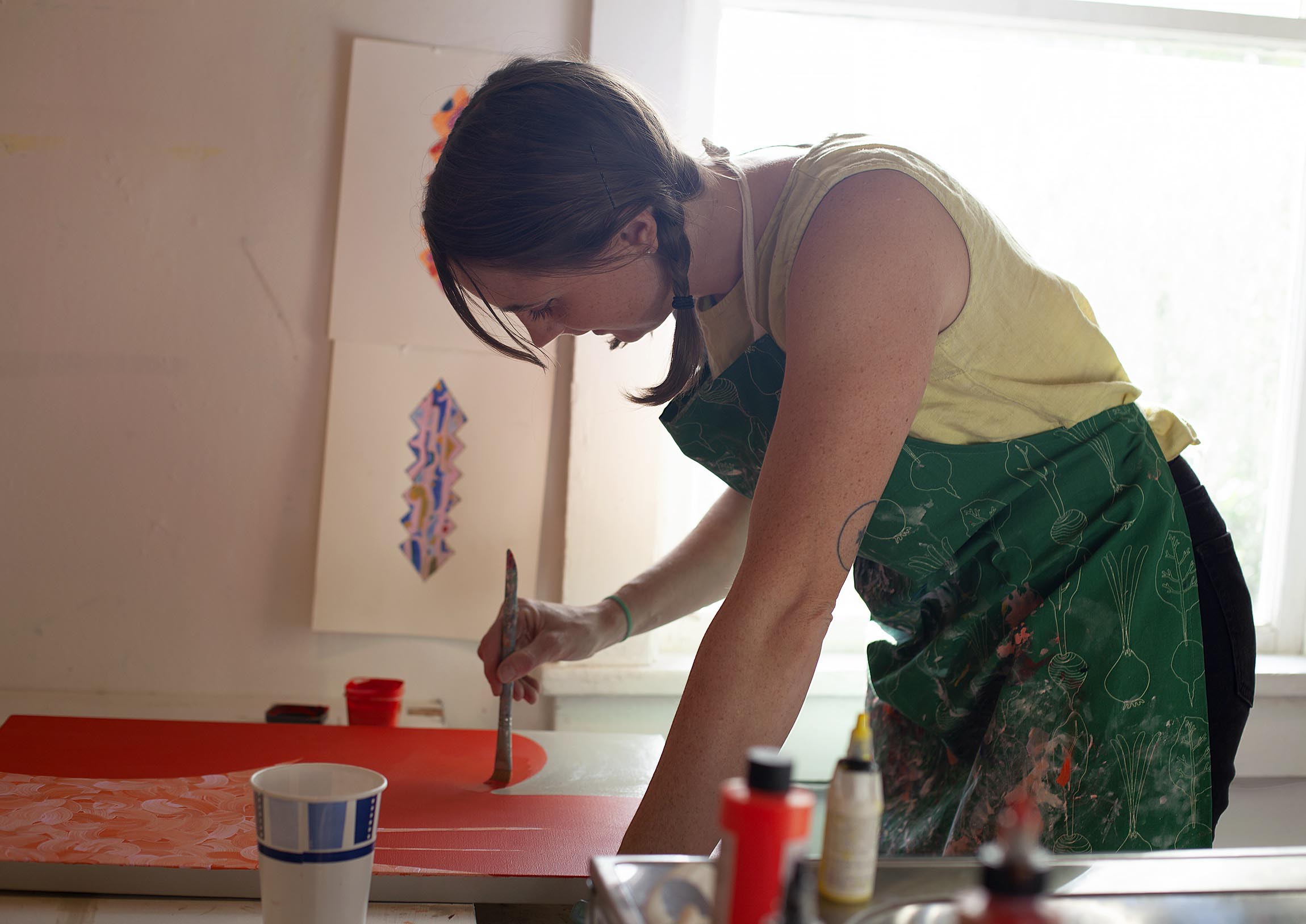

Who are your favorite artists?
I really love a lot of contemporary abstract painters and sculptors. Some of my favorite artists are currently my peers: Alyssa McClenghan, Rose Nestler, Alicia Adamerovich, Amelia Carley, Estefania Velez-Rodriguez, Alicia Little, Angela Heisch, Amie Cunat, Paz Mallea, Til Will. I think growing up on the West Coast has influenced some of the super star painters I look up to, including Rebecca Morris and Laura Owens. I’m also blown away with what I see other contemporary artists doing with shapes and painting. Maryam Hoseini, Alfie Kungu, Emily Ferretti, Leah Guadagnoli, Robin Williams, Charlene Von Heyl, Alison Schulnik, Debbie Manville, the list goes on…


Where do you go to discover new artists?
I discover a lot of emerging artists through instagram and art handling. There’s a joke when you meet a new handler, where one of the first questions people ask is “what do you make?” It’s a great job for meeting other creatives. Now that I’ve been in NYC for seven years, I’ve also figured out which galleries I like in particular and I enjoy learning about new artists through them.
Debbi Kenote is an artist based in Brooklyn who was recently shortlisted for The Hopper Prize. To learn more about the artist:
